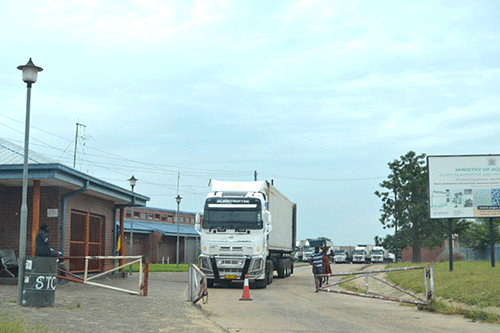KM- The Trans-Zambezi Highway officially known as the Walvis Bay-Ndola-Lubumbashi Development Corridor (WBNLDC) is without a doubt one of the safest corridors in Africa, as it eliminates the necessity for police escorts to accompany trucks moving valuable cargo along the corridor.
To maintain this status, the Walvis Bay Corridor Group (WBCG) undertakes regular corridor assessments.
These were the views of WBCG CEO Mbahupu Tjivikua, who explained the economic benefits of the Trans-Zambezi highway during a recent interview with this reporter.
“Given the safety of the corridor and the fact that Namibia has the best quality roads in Africa, travellers are poised to experience the WBNLDC as not only safe but also efficient and reliable,” Tjivikua said.
He said the corridor has become one of the preferred trade routes for imports and exports in the region, consequently reducing the cost of doing business and enhancing intra-Africa trade in the region.
The corridor is a major trade route linking the port of Walvis Bay in Namibia with the hinterland countries of Zambia and the Democratic Republic of Congo (DRC).
The Zambezi region is seen as a gateway to the Southern African Development Community (SADC) in unlocking the economic potential of the regional market through the Katima Mulilo and Ngoma border posts.
Zambezi is the gateway to Angola, Botswana, Zimbabwe, Malawi, and Tanzania.
The corridor runs via the Zambezi region in north-eastern Namibia and enters Zambia via the Katima Mulilo bridge.
It was officially opened in 1999.
In May 2004, the bridge over the Zambezi River at Katima Mulilo (Namibia) and Sesheke (Zambia) was completed, which has been a strategic piece of infrastructure in this corridor.
The corridor stretches over 2 500km and is supported by a railway line between Walvis Bay and Grootfontein, where transshipment facilities are available.
Given the importance of this corridor, Tjivikua said Namibia signed a memorandum of agreement with Zambia and DRC to facilitate seamless cross-border trade on the corridor.
“This corridor connects the hinterland and land-linked countries such as DRC, Botswana, Malawi, Zambia, and Zimbabwe to the international markets through Namibia. It also supports intra-Africa trade in support of the African Continental Free Trade Area (AfCFTA) Agreement,” he noted.
Zambezi governor Lawrence Sampofu during his state of the region address last year indicated that the region is strategically located at the heart of the KAZA and plays a huge role in the economic advancement of the country.
He said the volume of cargo passing through Katima Mulilo and Ngoma border posts using the Walvis Bay-Ndola-Lubumbashi Development Corridor has significantly and steadily increased, compared to the 2021/22 financial year, consequently overwhelming the existing border infrastructure.
Sampofu said the country’s two border posts at Ngoma and Katima Mulilo, as well as other legal entry points in the Zambezi region, recorded a total of 225 340 entries and 214 892 departures since August 2022.
Tjivikua highlighted the significant freight volumes traversing through the corridors and the port of Walvis Bay yield a direct benefit to various stakeholders. These include the port, freight forwarders and clearing agents, trucking companies, as well as regulatory bodies such as Roads Authority, which garners revenue through abnormal permit fees, and the Road Fund Administration, which collects cross-border charges.
Furthermore, he said there exist indirect beneficiaries stemming from the activities along this corridor, such as hotels, restaurants, shops, and service stations.
With the Katima Mulilo border post now open 24 hours, Tjivikua said this move facilitates cross-border trade and alleviates congestion at the border.
He added it contributes towards improved road safety by eliminating the need for truck drivers to rush due to concerns about border closure.
Asked about some of the major challenges facing truck cargo transported through the Zambezi region, he pointed to the operating hours of the weighbridges that are not in sync with 24-hour border operations at the Katima Mulilo border post.
He said in addition to enhancing existing road infrastructure, there is a pressing need for the construction of a new railway line connecting Grootfontein and Katima Mulilo, to shift most of the bulk commodities transported on the corridor from road to rail.
“Furthermore, expanding the current border infrastructure is imperative to accommodate the establishment of the One Stop Border Post set up, a dedicated green lane for dangerous goods and single commodities to further de-congest the border and ensure more seamless trade,” Tjivikua suggested.
The CEO was quick to mention that the current border configuration and processes do not necessarily facilitate the fast movement of goods.
However, he said there have been concerted efforts by the government as evident with the 24-hour border operations, preclearance of goods, as well as future plans to expand the border infrastructure and facilities at Katima Mulilo.
-anakale@nepc.com.na


